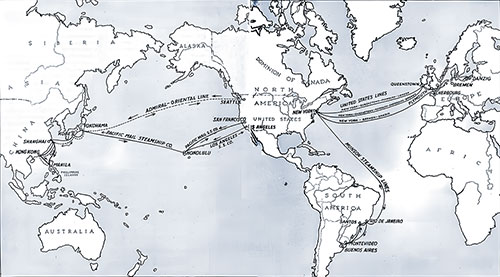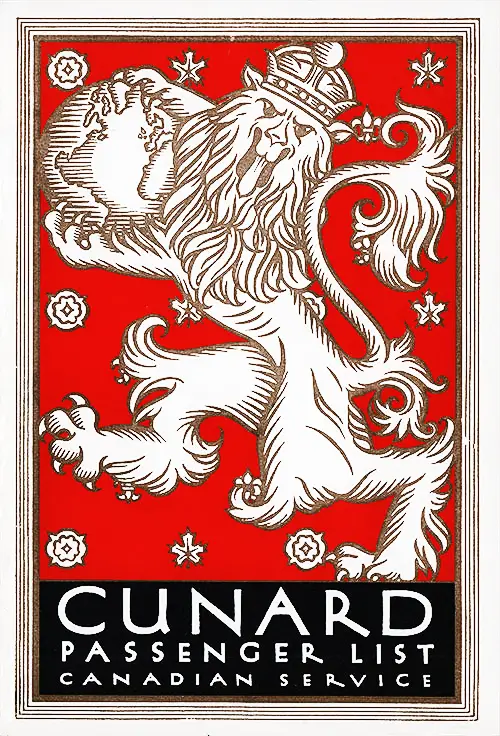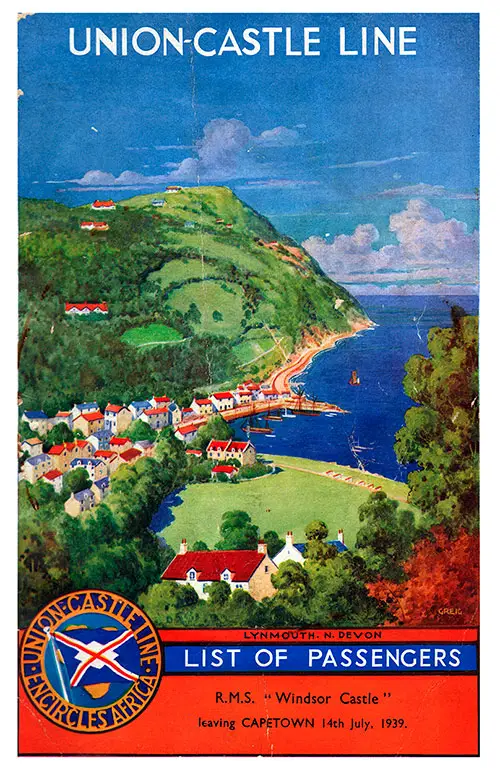Passenger List Collections by Region

Worldwide Route Map of the United States Lines. The Scope and Importance of the United States Merchant Marine Passenger Service May Be Visualized from the Above Map. It Will Be Seen That the American Flag Is Now a Familiar Sight in Most of the Important Ports of the World. Arrangements Are Made by the Various Companies Operating Government Ships so That the Traveler Bound to Some Other Port Than Those Indicated as Shipping Board Ports of Call May Be Transferred to the Best Available Ships Calling at His Destination. GGA Image ID # 11fe5d95d1
Organized by Region, the listings for Passenger Lists of the Gjenvick-Gjønvik Archive typically include the date, vessel, route, and class for voyages that originated from or called upon a port listed.

Asian Passenger Lists 1900-1930
The GG Archives’ collection of Asian Passenger Lists (1900-1932) is an invaluable historical resource, preserving records from key transoceanic voyages that connected Europe, North America, and Asia. These lists document a time when maritime travel was essential for trade, migration, diplomacy, and exploration, offering insight into the individuals who traveled across these vast distances.

Australian Passenger Lists 1899-1954
The GG Archives' collection of Australian Passenger Lists (1899-1954) offers an in-depth look at maritime travel to and from Australia during the golden age of ocean liners. Covering over five decades, these records document emigration, trade, tourism, and post-war reconstruction, providing valuable insight into the passengers and shipping lines that played a role in shaping Australia’s connectivity with the world.
In addition to the passenger lists, the collection includes cost of passage (1917), summaries of steamship services, and emigrant fare details, making it a rich resource for maritime historians, genealogists, and researchers.

Canadian Passenger Lists 1891 - 1956
Summary listing of Canadian Passengers Lists available at the Gjenvick-Gjønvik Archives originating from or calling on the Ports throughout Canada.
Canadian Passenger Lists 1891-1927
Canadian Passenger Lists (1891-1927) provide a fascinating look into over three decades of transatlantic migration, trade, and tourism. These records document the movement of people between Europe and Canada, capturing the golden age of steamship travel when ocean liners served as the primary means of long-distance transportation.
Canadian Passenger Lists 1928-1956
Canadian Passenger Lists (1928-1966) captures a pivotal period in transatlantic and transpacific travel, from the Great Depression and World War II to the dawn of commercial air travel in the 1960s. These voyages played a crucial role in immigration, business, wartime deployments, post-war resettlement, and luxury tourism.
This collection provides insight into the changing nature of sea travel, documenting the evolution from early 20th-century ocean liners to the more modernized post-war vessels.

French Passenger Lists 1887-1960
Summary listing of Passengers Lists available at the Gjenvick-Gjønvik Archives originating from or calling on the Ports of France.
French Passenger Lists 1887-1914
The French Passenger Lists (1887-1914) provides a fascinating glimpse into transatlantic travel during the height of the steamship era. This period saw a dramatic increase in European migration to the United States, the rise of luxury ocean liners, and the evolution of maritime technology.
French Passenger Lists 1917-1924
The French Passenger Lists (1917-1924) document a pivotal period in transatlantic travel—from World War I's final years to the economic recovery of the 1920s. These lists reflect a changing maritime industry, as ships transitioned from wartime operations back to civilian service.
French Passenger Lists 1925-1927
The French Passenger Lists (1925-1927) capture an era of post-war economic expansion and increased transatlantic travel. These lists offer insight into migration patterns, high society travel, and the evolving luxury liner experience.
French Passenger Lists 1928-1929
The French Passenger Lists (1928-1929) from the GG Archives present a fascinating snapshot of transatlantic travel in the late 1920s, a period marked by luxury, migration, and international tourism. These voyages reveal the economic and cultural exchanges between France, Europe, and North America while showcasing the dominance of major shipping lines.
French Passenger Lists 1930-1933
The French Passenger Lists (1930-1933) offer an extensive look into transatlantic and Mediterranean ocean travel during the early years of the Great Depression. These voyages highlight the resilience of global travel despite economic challenges, as well as the increasing emphasis on tourist travel, cruise experiences, and luxury liners catering to elite and middle-class passengers alike.
French Passenger Lists 1934-1937
The French Passenger Lists (1934-1937) showcase a fascinating period of transatlantic and international ocean travel, marked by the growing political tensions in Europe and the continued dominance of luxury liners, tourist travel, and cruise ships. This period is especially significant because it includes the launch of iconic ocean liners, the rise of tourism-based third-class travel, and the last years of White Star Line before its merger with Cunard Line in 1934.
French Passenger Lists 1938-1960
The French Passenger Lists (1938-1964) from the GG Archives provide a captivating insight into ocean travel before, during, and after World War II. This era marks a dramatic transition from the Golden Age of transatlantic liners to the postwar boom in tourism and leisure cruising.

German Passenger Lists 1881-1952
The German Immigration Passenger Lists (1881-1952) provide an extraordinary historical record of migration, commerce, and luxury travel. These lists not only document the movement of millions of people across the Atlantic but also offer a fascinating insight into the evolution of ocean liners. From early 19th-century immigrants packed in steerage to the grand luxury liners of the 1930s, this collection paints a vivid picture of transatlantic journeys over seven decades.

Summary listing of Irish Passengers Lists available at the Gjenvick-Gjønvik Archives originating from or calling on the Ports of Ireland or Northern Ireland.
Irish Passenger Lists 1883-1921
The collection of Irish passenger lists 1883-1921 provides a fascinating window into Irish emigration patterns and maritime travel from the late 19th century to the early 20th century. These documents capture details about passengers traveling from Irish ports—primarily Queenstown (Cobh) and Moville—to destinations such as New York, Boston, Philadelphia, and Liverpool. The records include voyages on famous ocean liners from major shipping companies such as Cunard Line, White Star Line, Anchor Steamship Line, American Line, Red Star Line, and Hamburg-Amerika Linie.
Irish Passenger Lists 1922-1931
The Irish passenger lists from 1922 to 1931 capture a fascinating era in transatlantic travel, reflecting the social and economic changes of the time. The years following World War I saw a shift in emigration patterns due to new U.S. immigration laws (such as the 1924 Immigration Act), limiting mass movement from Europe, including Ireland. Additionally, the emergence of tourist third-class travel made sea voyages more accessible to middle-class passengers.
Irish Passenger Lists 1932-1954
The Irish Passenger Lists (1932-1956) document a transformational period in transatlantic travel, spanning from the post-Great Depression years to the aftermath of World War II and the beginning of the Jet Age. This index provides an insightful record of major shipping lines, evolving class structures, and the transition from luxury liners to postwar migration vessels.

Italian Passenger Lists 1894-1954
The Italian Passenger Lists (1893-1954) provide an extensive record of maritime travel during a turbulent and transformative period in history. These voyages reflect Italy’s role as a key player in transatlantic migration, global tourism, and luxury travel, covering the Golden Age of Immigration, World War I & II, the interwar period, and the postwar resurgence of ocean liners.

Scandinavian Passenger Lists 1905-1954
The Scandinavian Passenger Lists (1905-1954) from the GG Archives offer a fascinating glimpse into transatlantic voyages between Scandinavia and North America during a time of mass migration, global conflict, and the rise of leisure travel. This collection spans nearly 50 years, covering waves of Scandinavian immigration, the impact of two World Wars, and the evolution of ocean liners from practical transport to luxury cruising.

South Africa Passenger Lists 1911-1955
The South Africa Passenger Lists (1911-1955) present a fascinating historical record of transoceanic voyages between the United Kingdom, South Africa, and beyond. These lists highlight the key role of ocean liners in global migration, colonial administration, business trade, and leisure travel.
This collection predominantly features Union-Castle Line, which was the premier shipping company for South African routes, as well as other notable lines like the Aberdeen Line and the American South African Line. The routes covered in these lists span from England to South Africa, from South Africa to Australia, and even intercontinental journeys connecting Africa with the Americas.
Recap and Summary of the Passenger List Collections by Region
The Passenger List Collections by Region in the GG Archives offer a comprehensive historical record of global maritime travel, migration, and commerce spanning over a century (1881-1960). Organized by geographical regions, this collection provides invaluable insight into how ocean travel shaped immigration, trade, colonial administration, leisure cruising, and wartime logistics.
These lists document the movement of millions of people across major transatlantic and transpacific routes, capturing the rise of luxury liners, mass emigration, war-time ship deployments, and the post-war resurgence of sea travel before the dominance of commercial aviation.
Key Features of the Collection
- Global Scope: Covers Europe, North America, Asia, Australia, and Africa, showcasing the world's major maritime migration patterns.
- Diverse Passenger Classes: Includes first-class luxury travelers, immigrants in steerage, government officials, military personnel, and postwar refugees.
- Transition Over Time: Reflects the evolution from early 19th-century steamship travel to the postwar cruise industry.
- Wartime Disruptions: Provides insight into ships repurposed for war efforts and refugee movements during WWI and WWII.
- Post-War Recovery: Demonstrates how ocean travel shifted from mass migration to tourism and business travel in the 1950s.
Notable and Interesting Aspects from Each Region
While all regions provide valuable maritime history, certain collections stand out for their historical significance, unique travel routes, and impact on global migration.
1. Asian Passenger Lists (1900-1932) – Early Transpacific Trade and Migration
- Why It’s Interesting: Covers voyages between Europe, North America, and Asia, a period when Japan, China, and Southeast Asia were expanding their maritime trade with the West.
- Historical Insight: These records capture the early waves of Asian migration to the U.S. and Canada, including those affected by restrictive immigration policies.
2. Australian Passenger Lists (1899-1954) – Immigration and War-Era Travel
- Why It’s Interesting: Offers a look into Australia’s transformation from a British colony to an independent nation, covering mass immigration, trade routes, and military troop movements.
- Additional Value: Includes details on emigrant fares, shipping summaries, and wartime evacuations, making it a rich resource for researchers.
3. Canadian Passenger Lists (1891-1956) – A Gateway to North America
- Why It’s Interesting: Documents the large-scale movement of Europeans to Canada, showcasing how ocean liners served as the primary gateway to North America before air travel.
- Economic Shifts: Tracks immigration booms, the Great Depression, and postwar resettlement efforts.
4. French Passenger Lists (1887-1960) – Luxury Travel and Immigration
- Why It’s Interesting: Highlights the grandeur of early transatlantic luxury travel, including voyages of the French Line’s most opulent ocean liners.
- Historical Significance: Captures pre-WWI European emigration, post-WWI economic recovery, and WWII refugee movements.
5. German Passenger Lists (1881-1952) – Mass Migration and Wartime Voyages
- Why It’s Interesting: Chronicles waves of German emigration to the U.S., as well as the rise and fall of Germany’s ocean liner industry during both world wars.
- Ship Evolution: Follows the development of German steamships, from early immigrant-packed vessels to grand luxury liners of the 1930s.
6. Irish Passenger Lists (1883-1954) – A Story of Emigration and Hardship
- Why It’s Interesting: Provides insight into the mass Irish emigration following the Great Famine, continuing into the early 20th-century waves of transatlantic migration.
- Changing Trends: Tracks how restrictive U.S. immigration laws (like the 1924 Immigration Act) changed Irish migration patterns.
7. Italian Passenger Lists (1893-1954) – From Mass Migration to Cruise Tourism
- Why It’s Interesting: Covers the massive waves of Italian migration to North America in the early 20th century, as well as Italy’s role in the global cruise industry.
- Key Routes: Includes Italy’s transatlantic connections to Argentina, the U.S., and Canada, as well as Mediterranean cruise routes.
8. Scandinavian Passenger Lists (1905-1954) – The Viking Spirit Reborn
- Why It’s Interesting: Documents waves of Scandinavian emigration to North America, driven by economic hardship, adventure, and business opportunities.
- Unique Voyages: Includes Arctic and Antarctic expedition voyages, reflecting Scandinavia’s maritime exploration legacy.
9. South Africa Passenger Lists (1911-1955) – Colonial Administration and Trade
- Why It’s Interesting: Chronicles the importance of South African ports in global trade and migration, including routes to England, Australia, and America.
- Key Ships: Features voyages of Union-Castle Line, which was the primary link between Britain and its African colonies.
Broader Themes in the Collection
This collection paints a vivid picture of maritime history, reflecting global trends in migration, politics, economics, and technology. Some key themes include:
1. Mass Migration and the Golden Age of Steamships
- From the 1880s to the early 20th century, steamships revolutionized global migration.
- Millions of European and Asian immigrants crossed the Atlantic and Pacific on ships documented in these lists.
- Many passenger lists are essential for genealogy, helping descendants trace their ancestors’ journeys.
2. The Rise of Luxury Ocean Liners (1900-1930s)
- Passenger lists from the 1920s and 1930s showcase the heyday of luxury ocean travel.
- This was the era of Cunard, White Star, and French Line superliners, catering to the wealthy elite.
- The contrast between luxury first-class passengers and steerage emigrants is a stark reminder of social divisions in sea travel.
3. Impact of World Wars on Maritime Travel (1914-1945)
- Many ships listed were converted into troop carriers or repurposed for military supply lines.
- Passenger lists during WWI and WWII document refugee movements, war evacuations, and repatriation voyages.
- The postwar reconstruction of shipping industries led to new routes and ship designs.
4. The Transition from Ocean Liners to Air Travel (1950s)
- By the 1950s, commercial air travel began replacing ocean liners as the preferred means of long-distance travel.
- The final years of passenger lists in this collection capture the last great transatlantic crossings before airlines took over.
- The legacy of these ships now lives on in modern cruise lines, many of which evolved from the great transatlantic companies.
Conclusion: A Window Into the Past
The Passenger List Collections by Region offer a captivating snapshot of global travel history, allowing researchers, historians, and genealogists to trace the journeys of their ancestors, understand migration patterns, and relive the golden age of ocean liners.
By exploring this collection, one can appreciate how the world was connected by sea before the rise of air travel—a time when the ocean was the highway of civilization, carrying dreamers, adventurers, and entire generations seeking new horizons.
